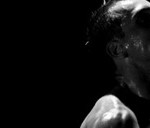
In the past, we’ve covered why it is important to sharpen your photos, and how you can use the Unsharp Mask tool in Photoshop to make sure your photos look their best.
I am a firm believer of understanding how things are done manually, however. If you are to take shortcuts, you have to know the long road to get there first. So… If you have a darkroom, how can you sharpen your images without letting the film go anywhere near a computer?
Here’s how…
In the old days, limited film and lens quality kept the sharpness away from photography. When the negative techniques started evolving, and lenses and film became the bottlenecks, people started to experiment with ways to improve the image in various ways. Contrast became one of the first improvements, but this was comparatively easy to correct in the darkroom. Now sharpness was a different thing altogether.
The first cameras used horribly show shutter times; This increases the chance of camera and/or subject movement. Slight focussing problems also frequently occurred. Remember that a regular 24 x 36 mm negative is enlarged significantly, and even the tiniest blurriness becomes visual: Which is why some bright soul came up with a way to sharpen the final results.
How to…
 If you want to have a go at using unsharp masking in the darkroom (heh – if you want to put yourself through stuff like that, let me tell you; I like you), here is a concise guide how it can be done. I have had a lot of surprises when using this technique – mostly positive surprises, but every now and then, things go very wrong. Even then, it looks interesting, if nothing else.
If you want to have a go at using unsharp masking in the darkroom (heh – if you want to put yourself through stuff like that, let me tell you; I like you), here is a concise guide how it can be done. I have had a lot of surprises when using this technique – mostly positive surprises, but every now and then, things go very wrong. Even then, it looks interesting, if nothing else.
Right. Take the negative you want to have sharpened, and place it on a photographical-grade glass plate. Underneath the glass plate, put some unexposed film. Now, make a contact copy of the film, and develop the film from under the glass plate. That should leave you with a positive copy of your negative. This copy will be ever so slightly blurred (because of the glass plate), which is exactly what you want. Align the two film strips, and put them both in your enlarger.
Right – let’s have a look what has happened now. Theoretically – if the contact copy was 100% exact, you shouldn’t be able to see through your negative. Why? Well – what was light in your original negative should now be dark in your positive (effectively a slide), and all the gradations should be cancelling each other out. However, you don’t have (and didn’t want) an exact copy – you need the small differences. When turning on your enlarger, you will see a strange outline of your image.
This outline consists of the original highlights (which were black in your negative – cause it’s a negative, remember?), and the blur is introduced into the transitions in the shadows of the image. What this means? Well – your shadows will ‘take more space’ in the image, and eat into the blurred edges of your original negative.
So – what you’ll want to do is to just briefly flash this unsharp mask on your photographic paper, and then expose the paper normally, using only the negative.
You should be able to tell the difference between pictures that have / have not had this done to them.
So how long should you flash the enlarger? I wish I could tell you. I have spent endless days in darkrooms, and eventually it becomes second nature. You can tell approximately how much exposure a particular unsharped image needs – just keep practising, and bracket all your tries (yes – half step bracket your unsharp masked image, and then see what works best. Take notes to find out exactly how you can make it all come toghether perfectly.)
Good luck!





